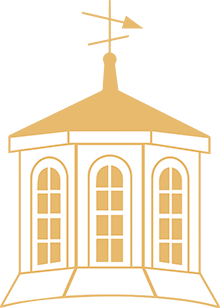The Clock Tower
 The E. Howard Co. of Boston built the clock, and its steel bell was cast in Sheffield, England. It weighed a ton. On July 26, 1873, the clock was installed at the top of the four-story Board of Trade building at the northeastern corner of School and North Main Streets. Its bell first tolled in 1874, recording the hours and serving as a landmark of downtown Concord.
The E. Howard Co. of Boston built the clock, and its steel bell was cast in Sheffield, England. It weighed a ton. On July 26, 1873, the clock was installed at the top of the four-story Board of Trade building at the northeastern corner of School and North Main Streets. Its bell first tolled in 1874, recording the hours and serving as a landmark of downtown Concord.
After World War II, the bell of history tolled for Concord’s bright and vibrant downtown. Residents dismissed the commercial buildings as “old brick shells,” and one consultant labeled North Main Street an “unsightly canyon,” according to Crosscurrents of Change: Concord, N.H., in the 20th Century, the book produced by the Concord Historical Society. In 1950, two stories were lopped off of the top of the Board of Trade building, and the floors that survived received a Colonial remodeling. The parts of the clock were lost. Ten years later, the grand old Boston & Maine Railroad Depot, a symbol of Concord’s transportation heritage, was torn down to make room for a shopping center.
By 1973, Concord’s downtown had been the subject of studies, consultancy reports and no little controversy. Old-timers and preservationists mourned the destruction of the railroad station. Main Street businesses concluded that the old brick shells should be torn down and the land used for parking lots. And then the architect Duncan McGowan and his wife Mary moved to Concord.
McGowan had ideas and a vision. Downtown Concord was one of the few intact 19th century downtowns in New Hampshire. To those who called for the destruction of the old police station on Warren Street, McGowan retorted, “They feel that the way to compete with shopping centers is to tear buildings down and make parking lots. My response is that a downtown area has something else to compete with – its sense of history, its heritage, the variety of the types of buildings … One way downtown Concord can survive is to figure out how to reuse the resources it has rather than bulldoze them down.” Working with Planning Director Randy Raymond and a supportive City Council led by Mayor Martin L. Gross, the city formed a consensus that favored historic preservation, reflected in Bicentennial Square and Eagle Square .
McGowan, who filled the entrance to Eagle Square with scraps of historic architecture, scoured the country for the old clock. The bell was found in a Michigan flea market. Volunteers raised $150,000 for its preservation, and the clock and bell were installed in a brick, copper and glass tower designed by architect F. Duene Cowan. On Dec. 18, 1998, some 125 years since the clock first came to Concord and 48 years after its removal, the hands moved and the bell tolled once more. Duncan McGowan was not present. He died on March 18, 1992, of complications from a cerebral hemorrhage. He was 50 years old.

